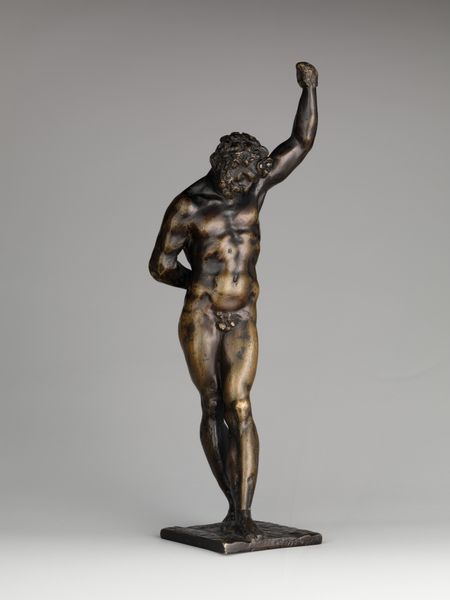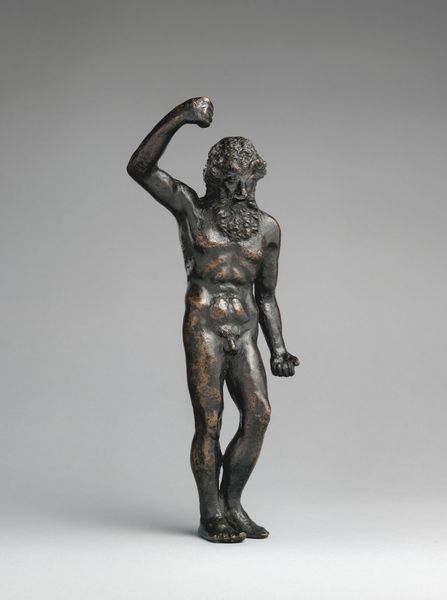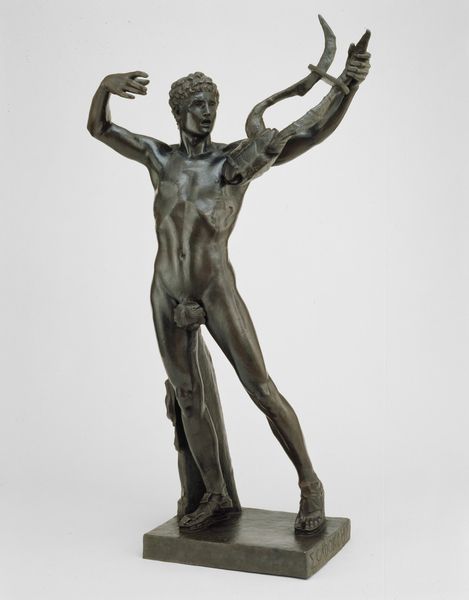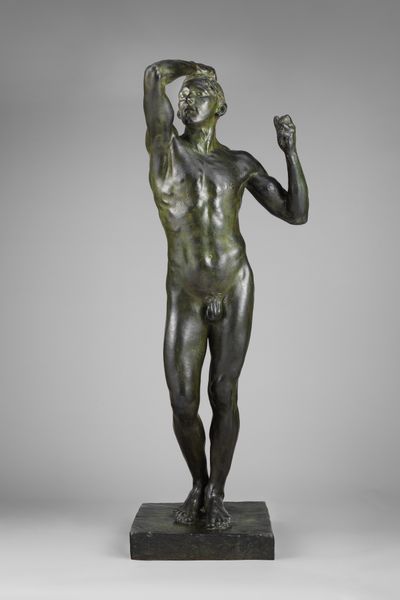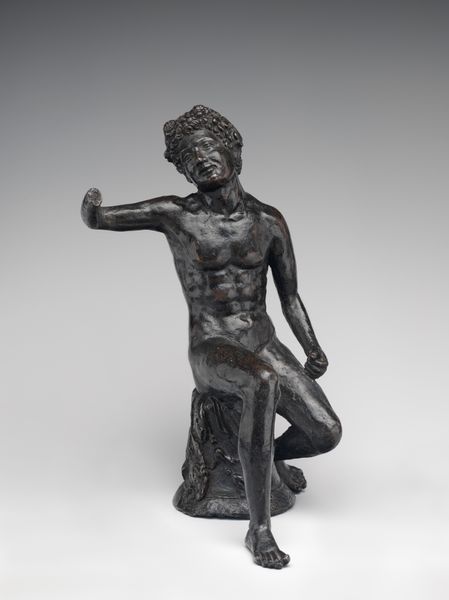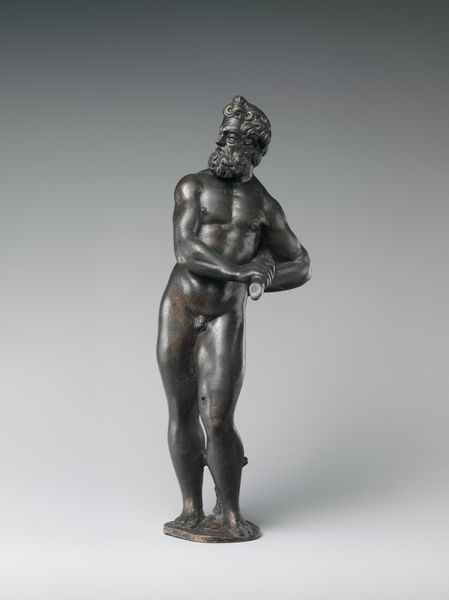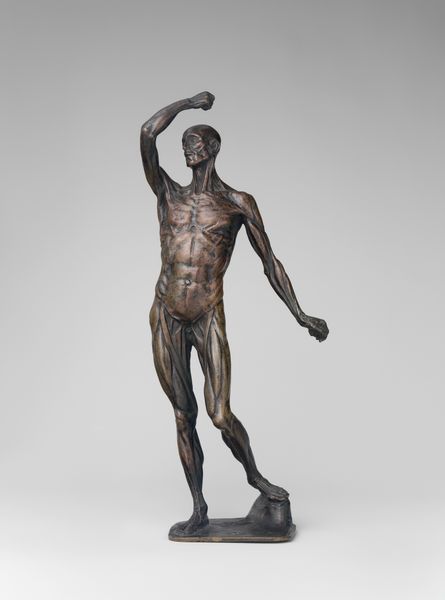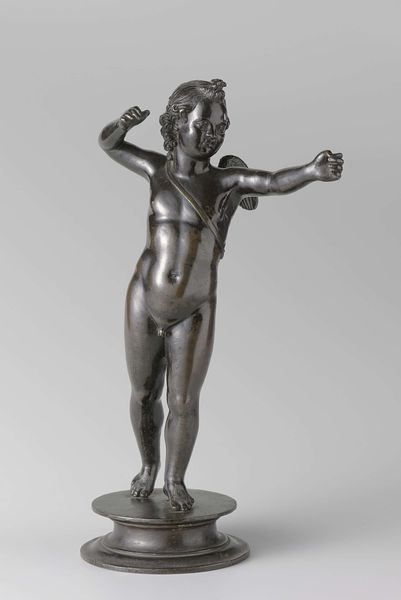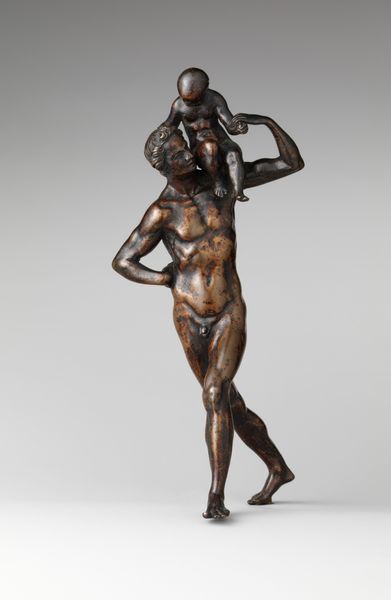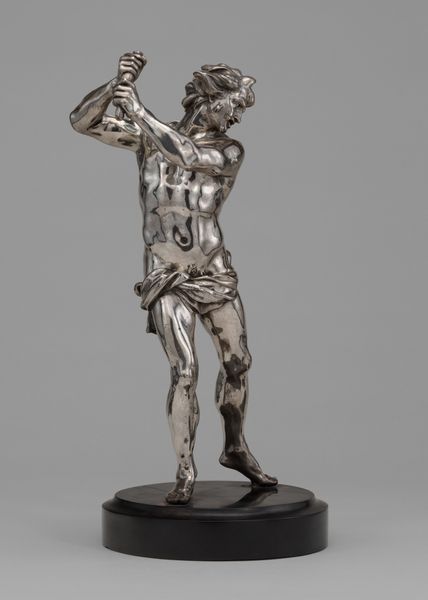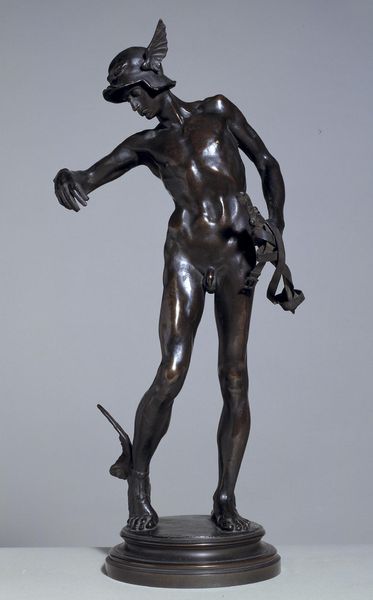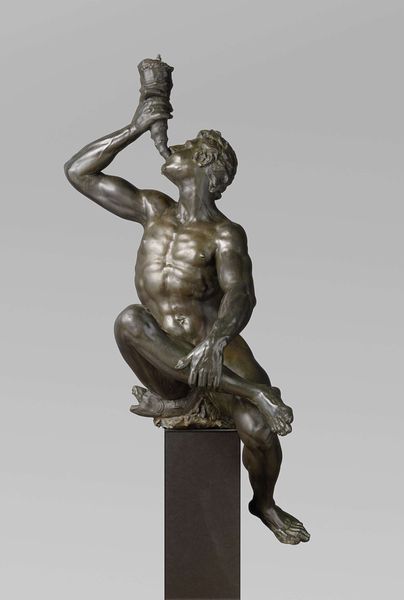
bronze, sculpture
#
bronze
#
mannerism
#
figuration
#
sculpture
#
decorative-art
#
nude
Dimensions: Overall (confirmed): 11 5/8 × 5 5/8 × 3 1/4 in. (29.5 × 14.3 × 8.3 cm)
Copyright: Public Domain
Curator: Benvenuto Cellini, a sculptor most known for his goldsmithing, crafted this bronze sculpture entitled, "Jupiter", sometime between 1575 and 1599. Editor: He has an intense presence, doesn’t he? A strong, weighty quality comes through even in this scaled-down representation. The dark patina contributes to the feeling, almost oppressive. Curator: That’s quite interesting because depictions of Jupiter, the Roman equivalent of Zeus, traditionally embodied divine power. And if we look at this figure, the muscularity combined with the raised arm, he definitely exudes dominance. We should consider the period though: Cellini was working during the Late Renaissance, in the Mannerist style. This sculpture needs to be situated in the period's prevailing intersectional values, artistic preferences, and cultural meanings. Editor: Indeed. I do perceive some tension, though, in the slightly elongated limbs. There's a deliberate distortion, defying the classical harmony expected of Renaissance ideals. Do you see the serpentine quality in his posture? This contrapposto is unusually accentuated and lends itself well to a formal interpretation. Curator: That could indicate the shift away from purely classical ideals—a search for something new. Note that Jupiter is completely nude, but we can still analyze his symbolic markers of authority: the bundle of thunderbolts raised triumphantly in one hand and the Eagle symbol nestled in the other, both clearly signaling patriarchal dominance in both heavenly and earthly power dynamics. Editor: True. Yet even the Eagle possesses this exaggerated, almost grotesque quality that I am drawn to. This visual tension draws me back to Cellini’s expert grasp of form and material. Bronze casting allows for this kind of minute detailing. Look at the intricacies of his hair and beard. Or the subtle modeling of the muscles beneath the skin. Curator: Looking through a lens of feminist theory and body politics, it begs the questions: What are the power dynamics between Jupiter’s male gaze and the absent observer’s view of the nude form, and how does that solidify this hierarchical power structure? How might this piece resonate differently depending on who is doing the viewing? Editor: Perhaps it is that very tension that gives this work its enduring power. That strange dance between idealized form and expressive distortion. The figure of Jupiter serves as an object for an ongoing structural reading through signs of texture and symbolic representation, offering an insight into not only artistic expression but human desire.
Comments
No comments
Be the first to comment and join the conversation on the ultimate creative platform.
